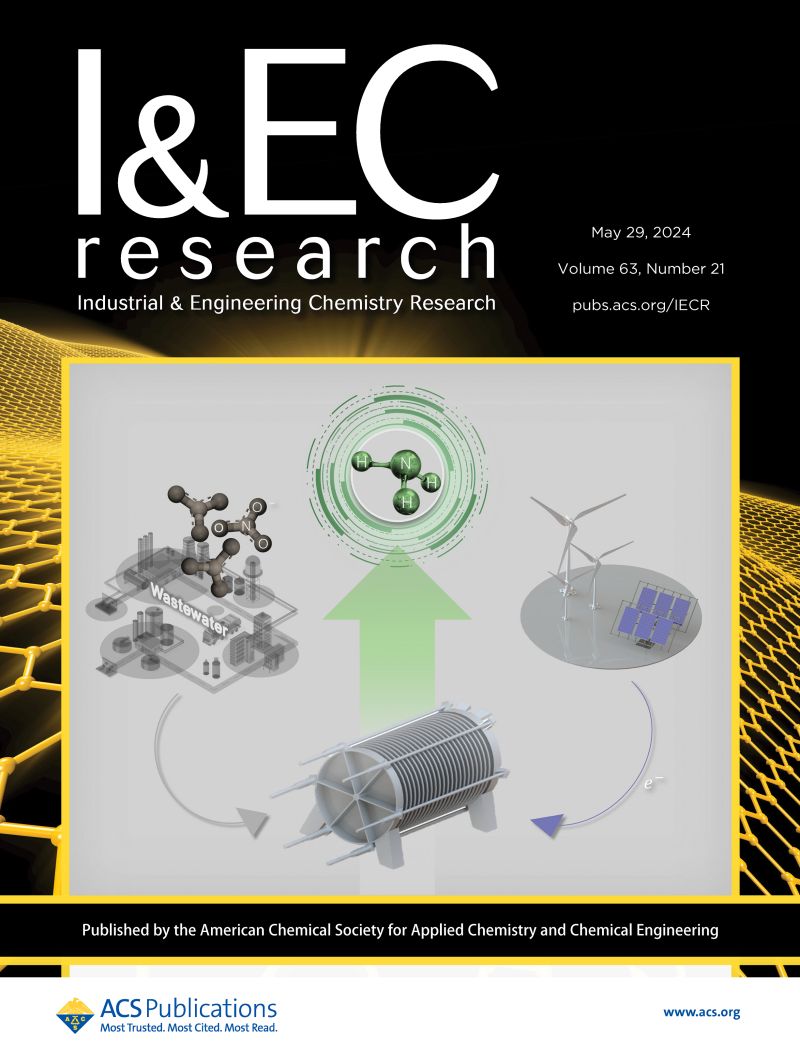Porous Silica Nanoreactors Encapsulating Pd-SnOx Hybrid Nanostructures for the Catalytic Reduction of 4-Nitrophenol
IF 3.8
3区 工程技术
Q2 ENGINEERING, CHEMICAL
引用次数: 0
Abstract
The synergy between noble metals and metal oxides can effectively improve the catalytic hydrogenation performance. However, precisely controlling the metal–metal oxide interaction remains a significant challenge. In this study, well-defined Pd-SnOx hybrid nanostructures encapsulated in porous silica nanoreactors (Pd-SnOx@pSiO2) were prepared using a microemulsion system comprising water, cetyltrimethylammonium bromide (CTAB), and 1-dodecanethiol (C12–SH). Within the system, CTAB and C12–SH acted as co-surfactants, forming self-assembled micelles, with Pd and Sn ions coordinated to C12–SH. Compared with individual Pd@pSiO2, Pd1-(SnOx)0.75@pSiO2 exhibited significant improvements in catalytic efficient and stability (6 cycles, conversion >99, and 100% selectivity) for the catalytic reduction of 4-nitrophenol. This improvement is ascribed to the synergy between Pd and SnOx, along with the confinement effect provided by the porous silica shells. This research provides a strategy for constructing reactive and stable noble-metal-based catalysts for the hydrogenation of substituted nitroaromatics.

包封Pd-SnOx杂化纳米结构的多孔二氧化硅纳米反应器催化还原4-硝基苯酚
贵金属与金属氧化物之间的协同作用可以有效地提高催化加氢性能。然而,精确控制金属-金属氧化物相互作用仍然是一个重大挑战。在本研究中,使用由水、十六烷基三甲基溴化铵(CTAB)和1-十二烷基硫醇(C12-SH)组成的微乳液体系,制备了封装在多孔二氧化硅纳米反应器(Pd-SnOx@pSiO2)中的定义明确的Pd-SnOx杂化纳米结构。在体系内,CTAB和C12-SH作为共表面活性剂,形成自组装胶束,Pd和Sn离子与C12-SH配合。Pd1-(SnOx)0.75@pSiO2催化还原4-硝基苯酚的效率和稳定性(6个循环,转化率为99,选择性100%)显著提高,与单个Pd@pSiO2相比,Pd1-(SnOx)0.75@pSiO2的催化还原效率和稳定性显著提高。这种改善归因于Pd和SnOx之间的协同作用,以及多孔二氧化硅壳提供的约束效应。本研究为构建具有活性和稳定性的贵金属基取代硝基芳烃加氢催化剂提供了一种策略。
本文章由计算机程序翻译,如有差异,请以英文原文为准。
求助全文
约1分钟内获得全文
求助全文
来源期刊

Industrial & Engineering Chemistry Research
工程技术-工程:化工
CiteScore
7.40
自引率
7.10%
发文量
1467
审稿时长
2.8 months
期刊介绍:
ndustrial & Engineering Chemistry, with variations in title and format, has been published since 1909 by the American Chemical Society. Industrial & Engineering Chemistry Research is a weekly publication that reports industrial and academic research in the broad fields of applied chemistry and chemical engineering with special focus on fundamentals, processes, and products.
 求助内容:
求助内容: 应助结果提醒方式:
应助结果提醒方式:


